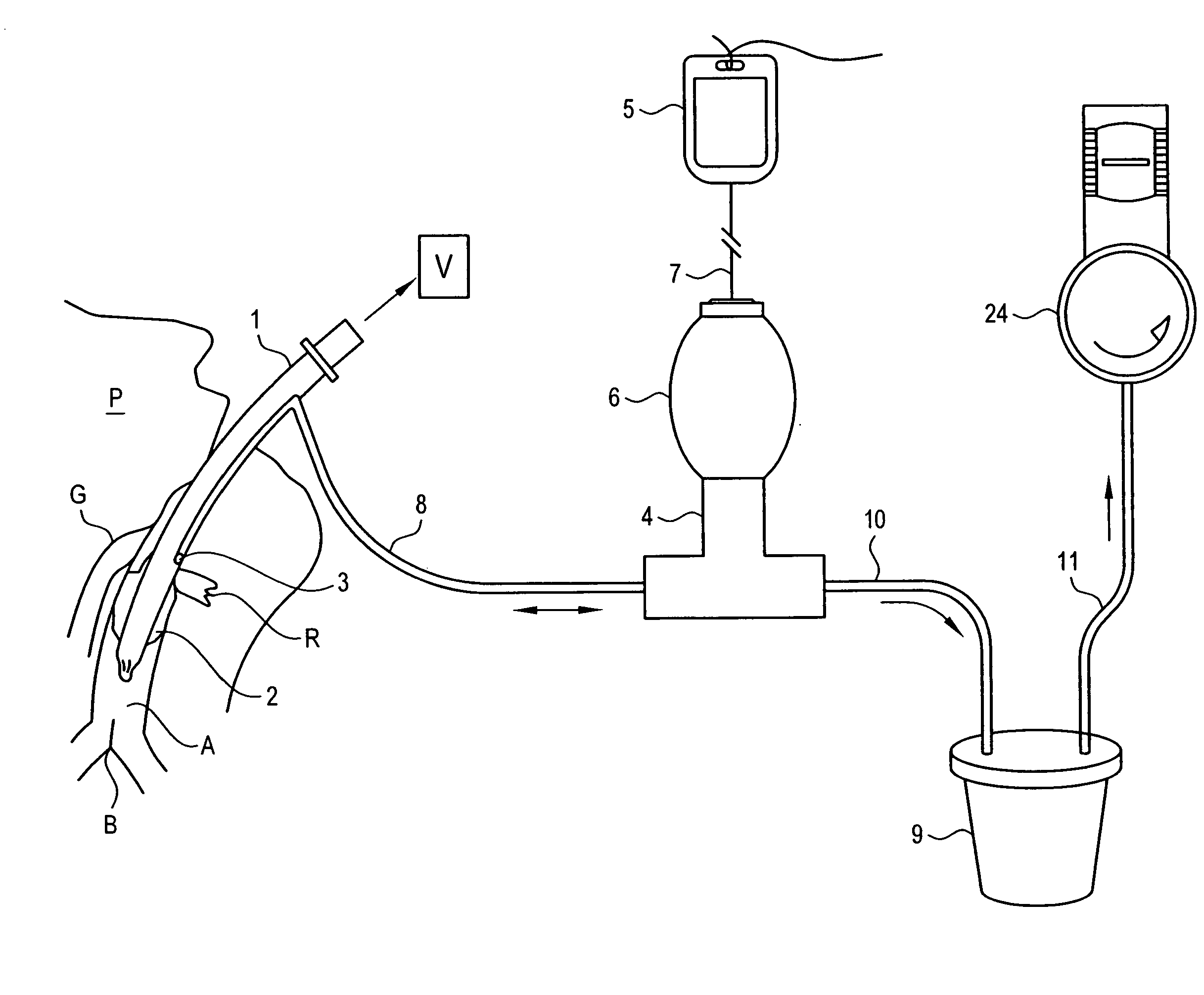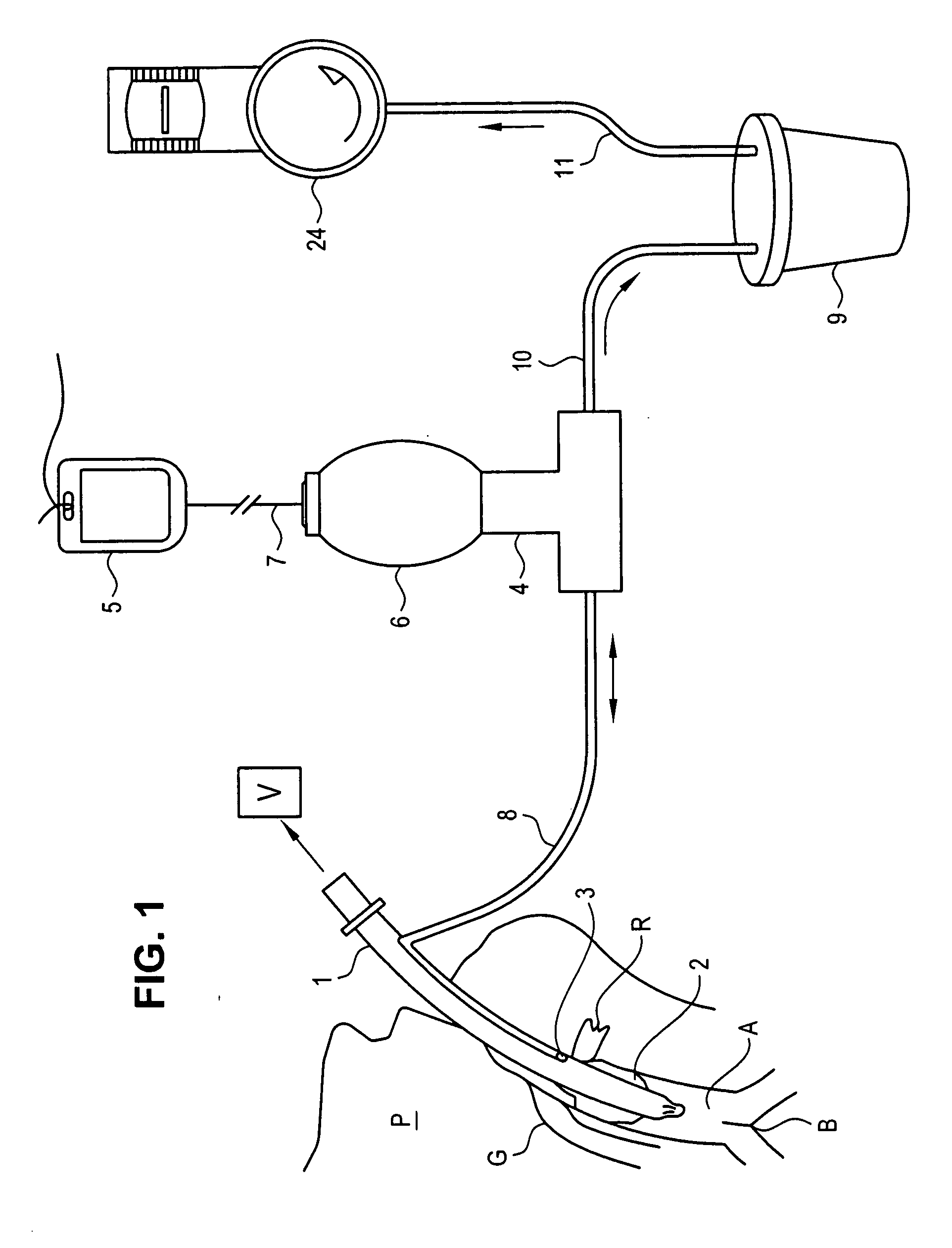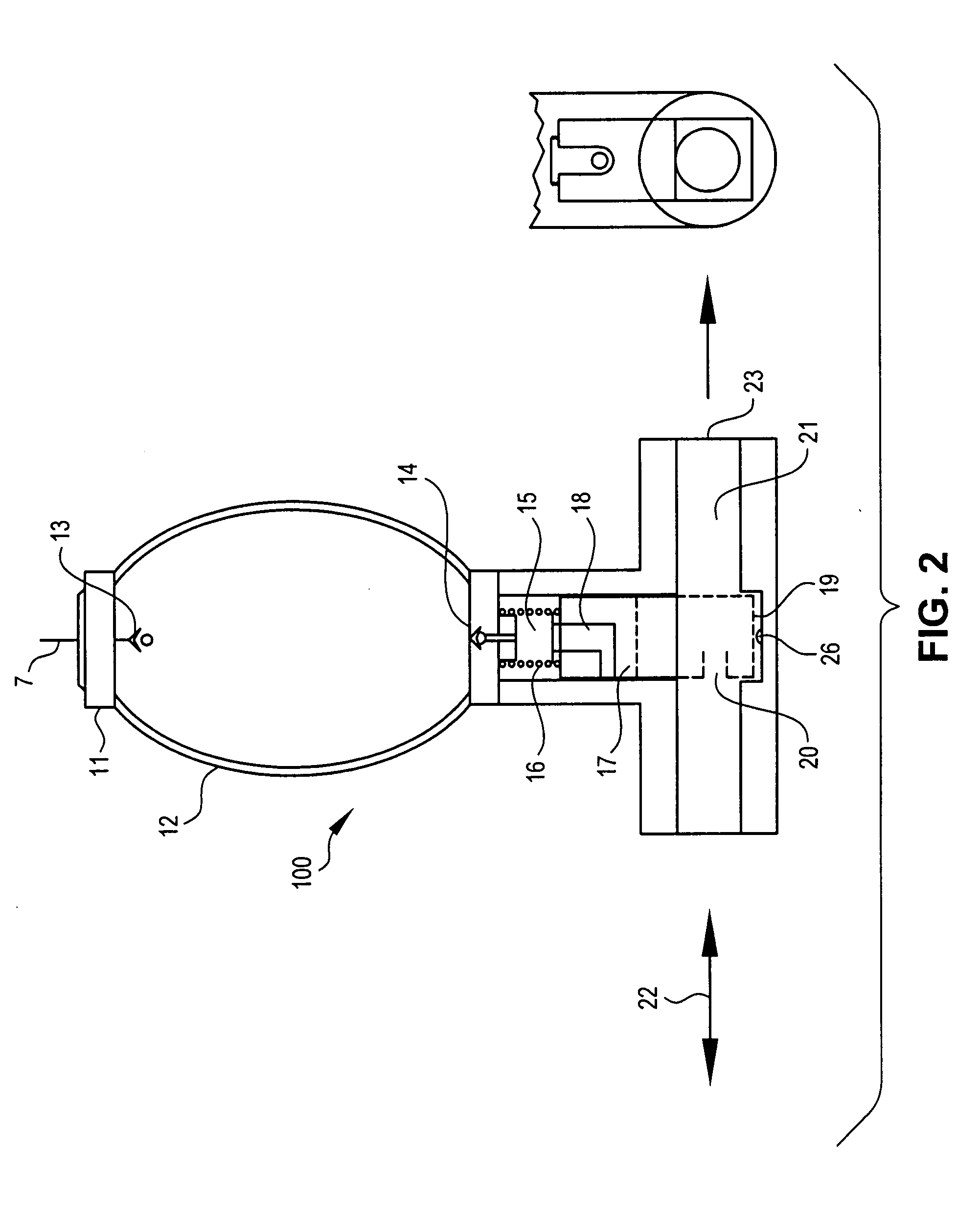Apparatus for vacuum-assisted irrigation and drainage of a body cavity
a technology of vacuum-assisted irrigation and apparatus, which is applied in the direction of suction irrigation system, suction device, other medical devices, etc., can solve the problems of inability to fully discharge, interrupt the body's natural defense mechanism, and increase the risk of ventilator-associated pneumonia (vap)
- Summary
- Abstract
- Description
- Claims
- Application Information
AI Technical Summary
Benefits of technology
Problems solved by technology
Method used
Image
Examples
Embodiment Construction
[0023]FIG. 1 illustrates a system according to an exemplary of the present invention. As shown in FIG. 1, patient P is mechanically ventilated by ventilation source V via a lumen, such as endotracheal tube 1. Endotracheal tube 1 is desirably placed in the trachea above the bronchial bifurcation B and below the glottis G. An inflatable balloon or cuff 2 is inflated to seal the breathing tube in the patient's airway A. The region R, defined by the space above the proximal end of the cuff and the glottis, refers to the subglottic space and is the area of attention for the exemplary device. Endotracheal tube 1 is a modified device and contains an aspiration port 3 used to evacuate the subglottic space. One type of endotracheal tube 1 that may be used is the HI-LO Evac ET Tube manufactured by TYCO Healthcare / Mallinkrodt of Hazelwood, Mo. Current use of the endotracheal tube involves either continuous or intermittent suction to remove the fluids that accumulate in the subglottic space.
[0...
PUM
 Login to View More
Login to View More Abstract
Description
Claims
Application Information
 Login to View More
Login to View More - R&D
- Intellectual Property
- Life Sciences
- Materials
- Tech Scout
- Unparalleled Data Quality
- Higher Quality Content
- 60% Fewer Hallucinations
Browse by: Latest US Patents, China's latest patents, Technical Efficacy Thesaurus, Application Domain, Technology Topic, Popular Technical Reports.
© 2025 PatSnap. All rights reserved.Legal|Privacy policy|Modern Slavery Act Transparency Statement|Sitemap|About US| Contact US: help@patsnap.com



